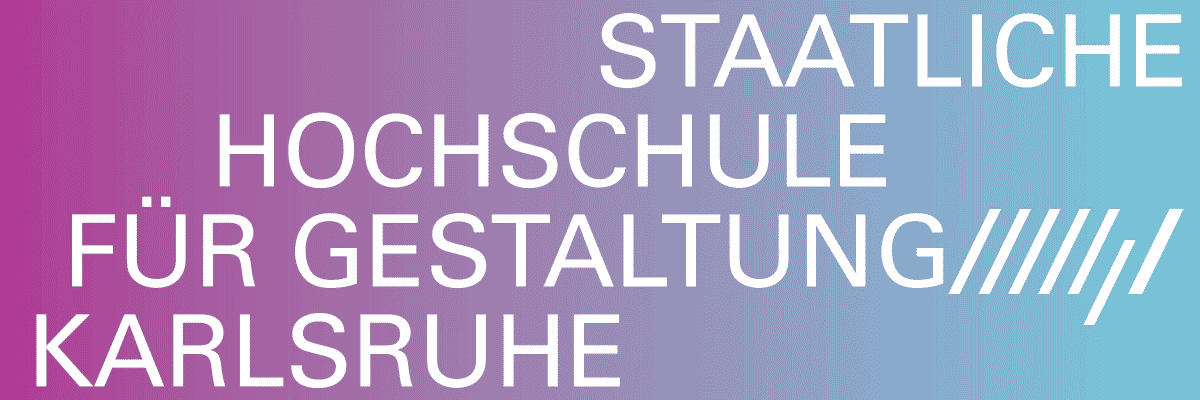
Marie Zolamian
Droomland
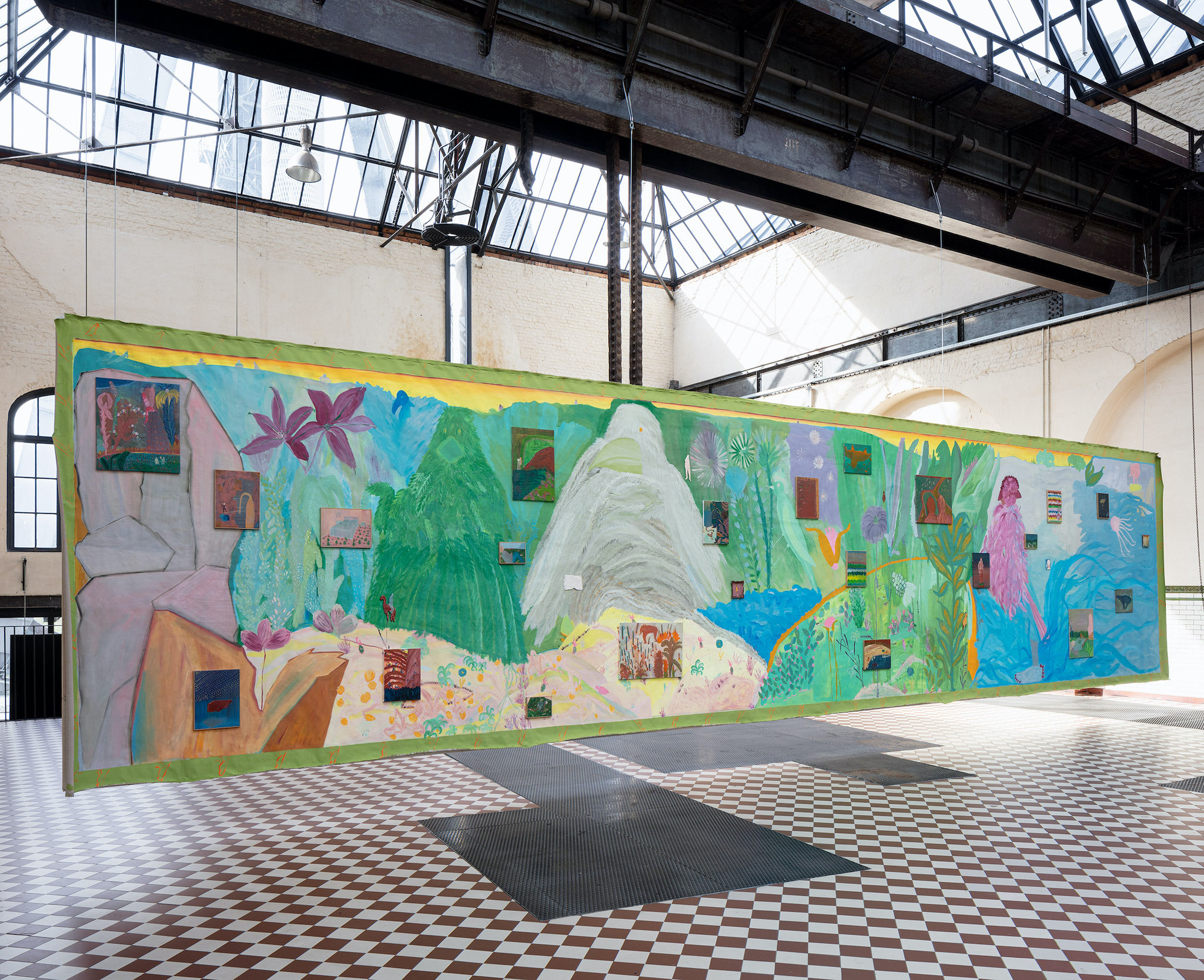
Symbiocene, 2022
Advertisement
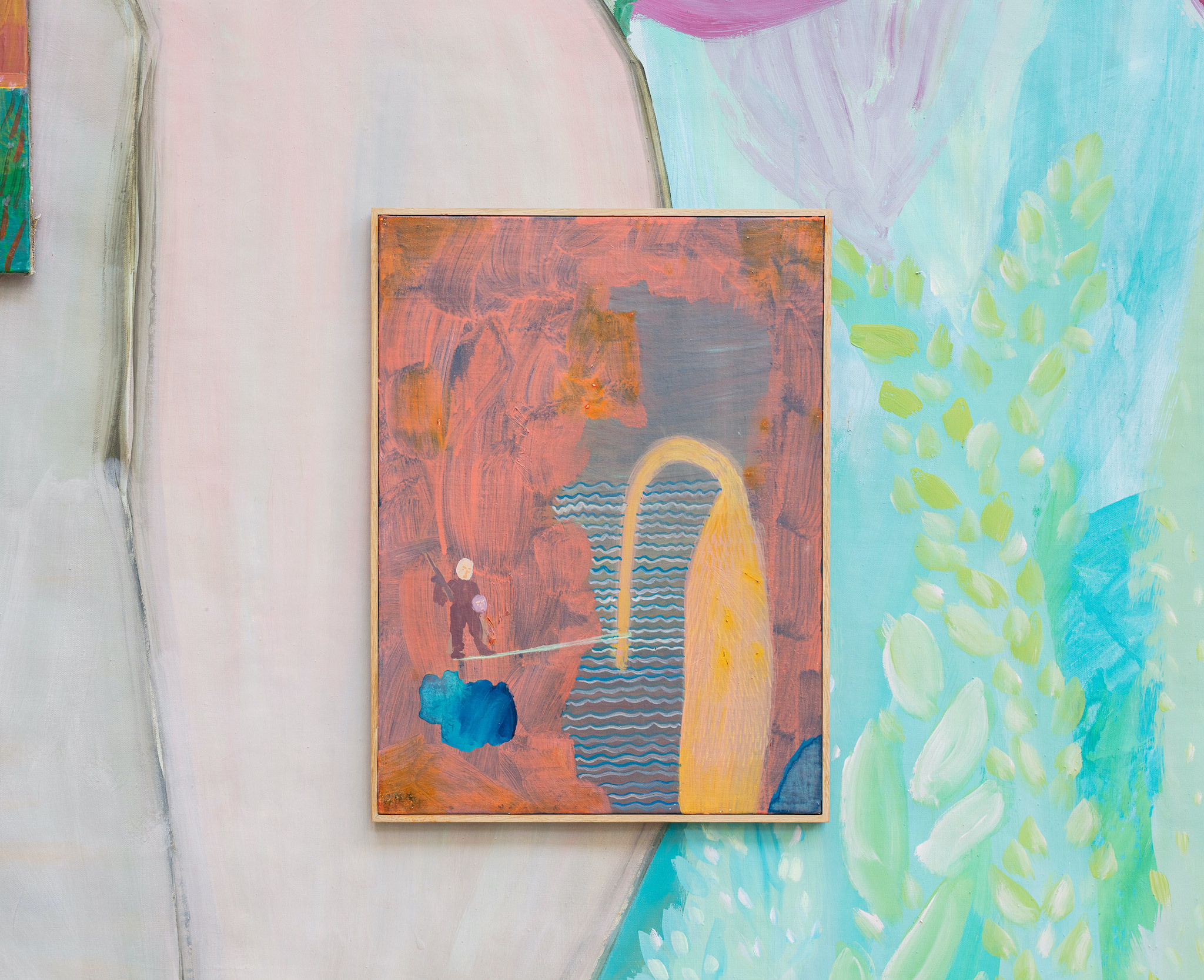
Admonestation, 2022
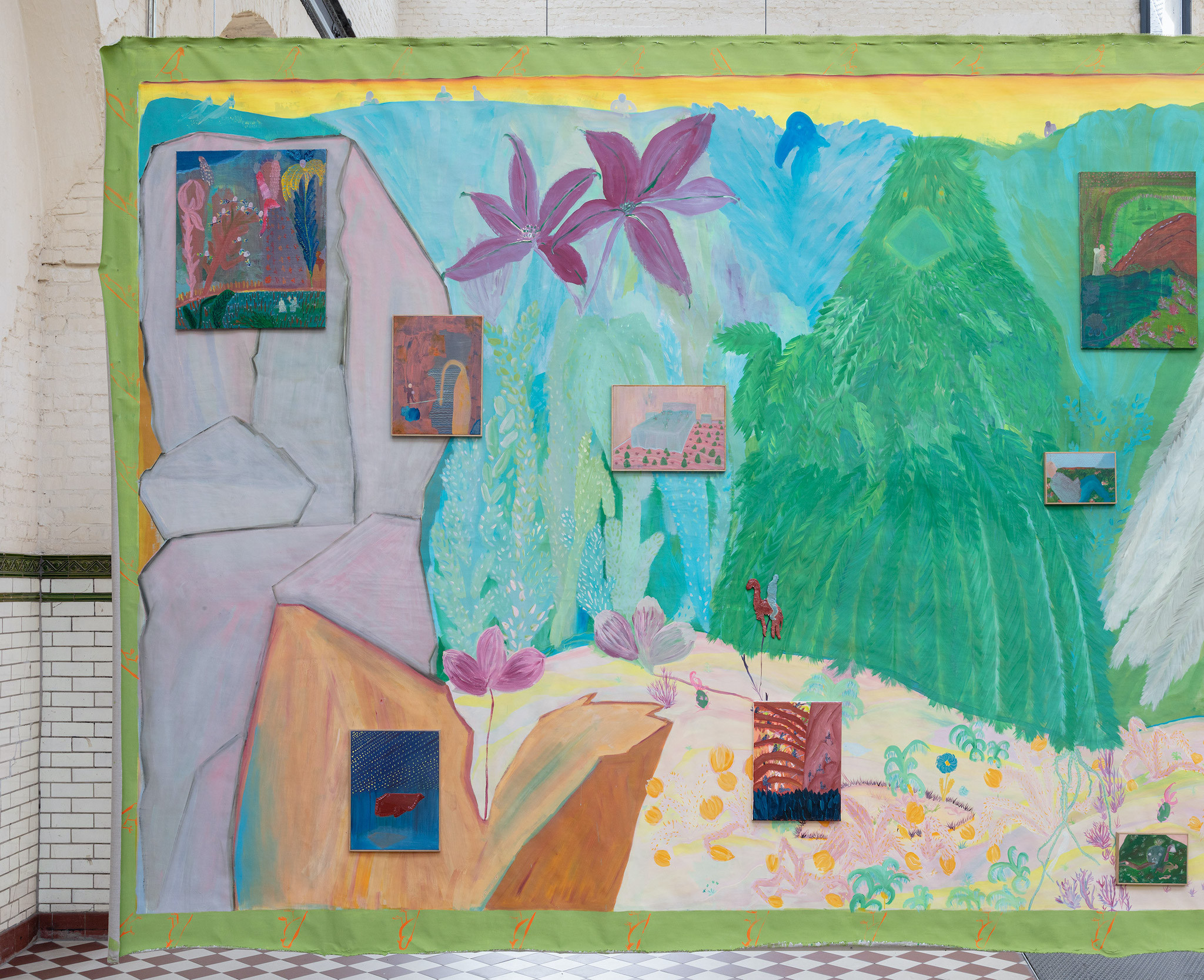
Symbiocene, 2022, close-up
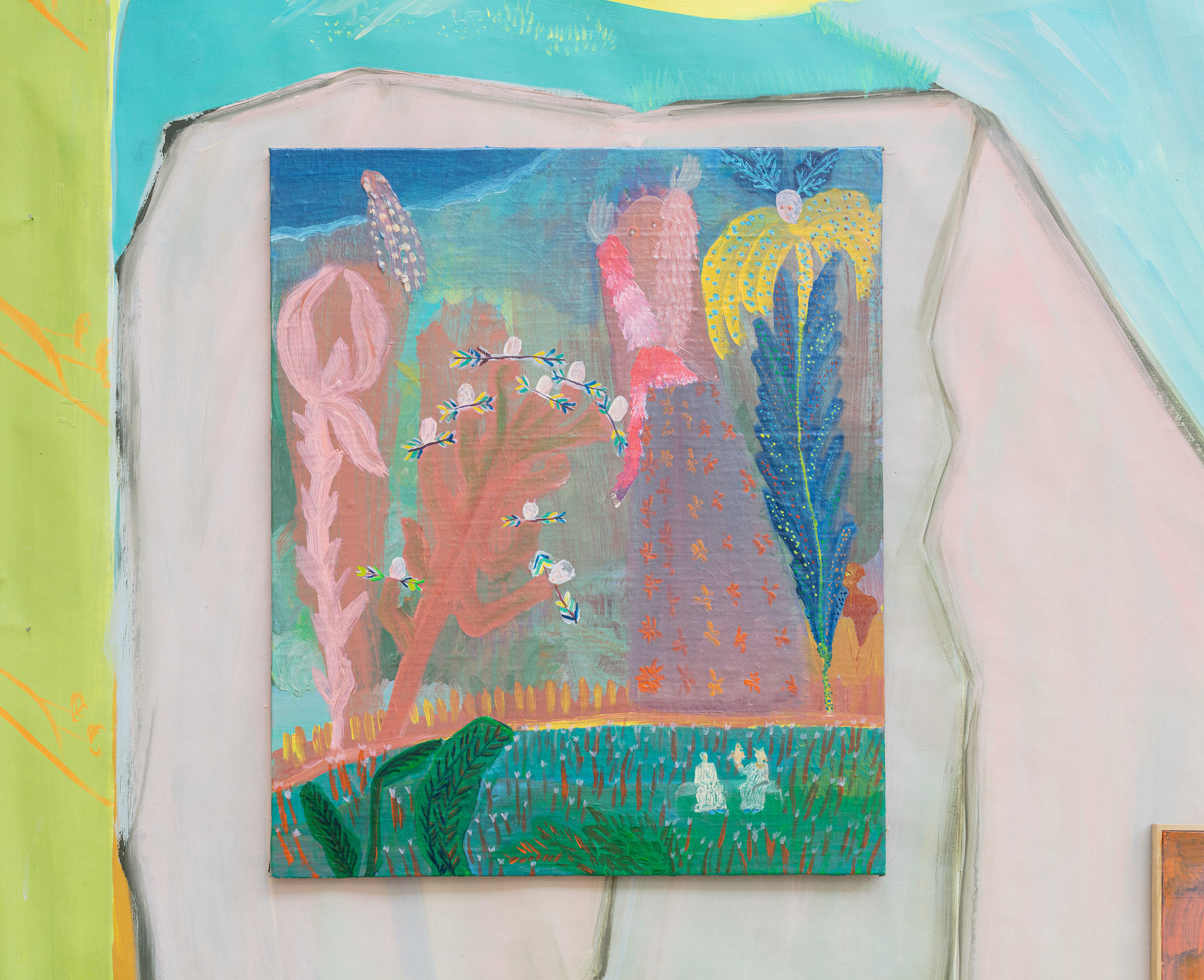
Octopus teacher, 2022
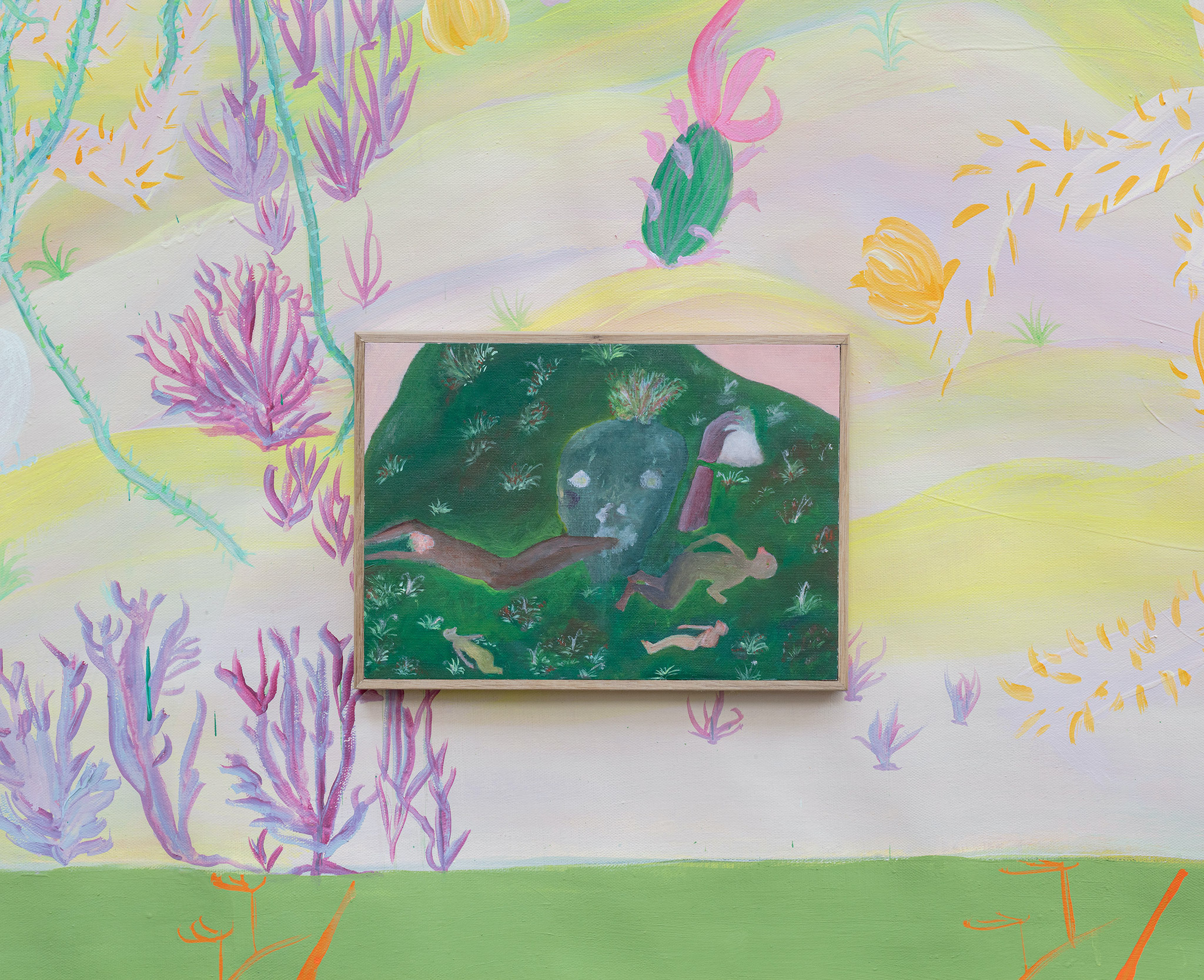
Ribote, 2016
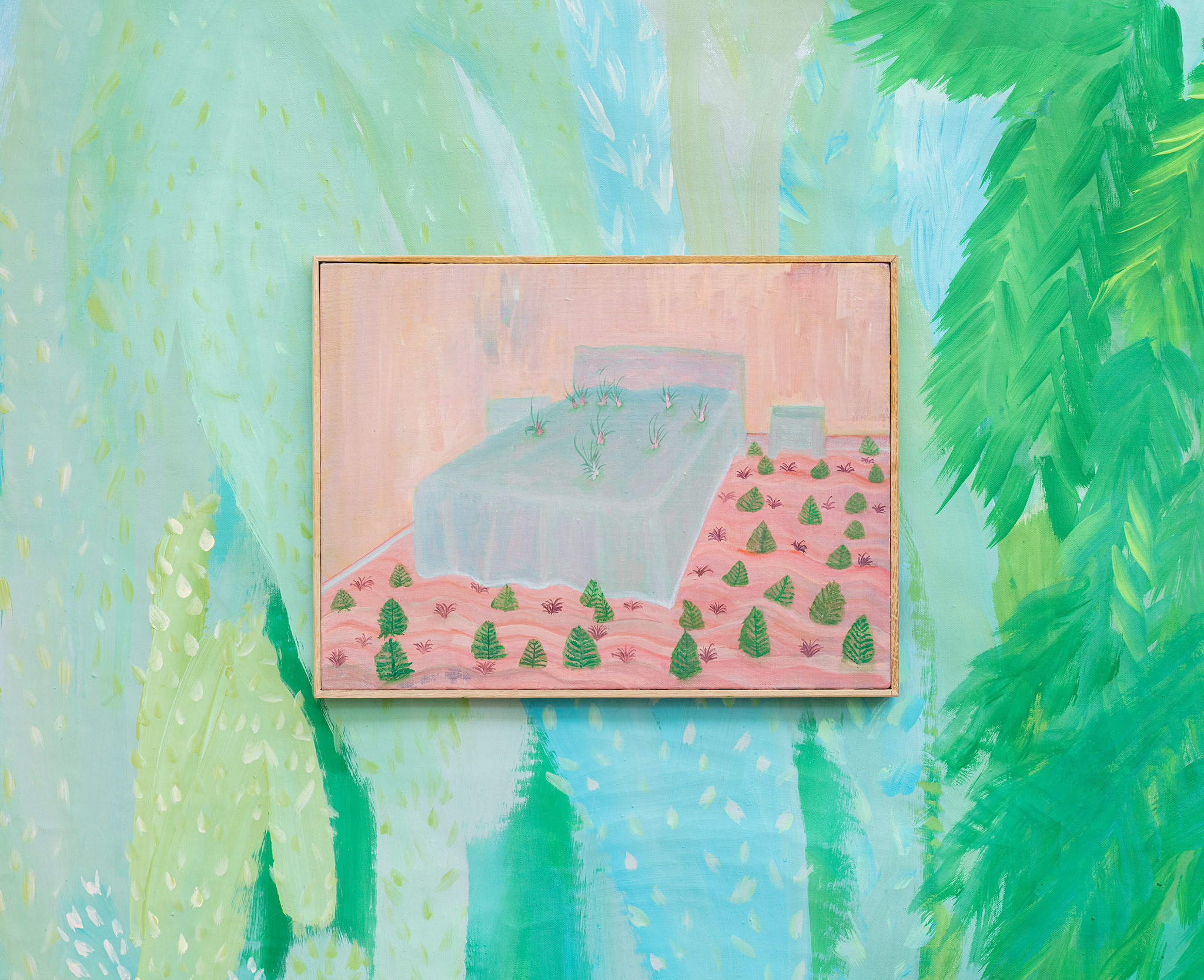
Espalier, 2021
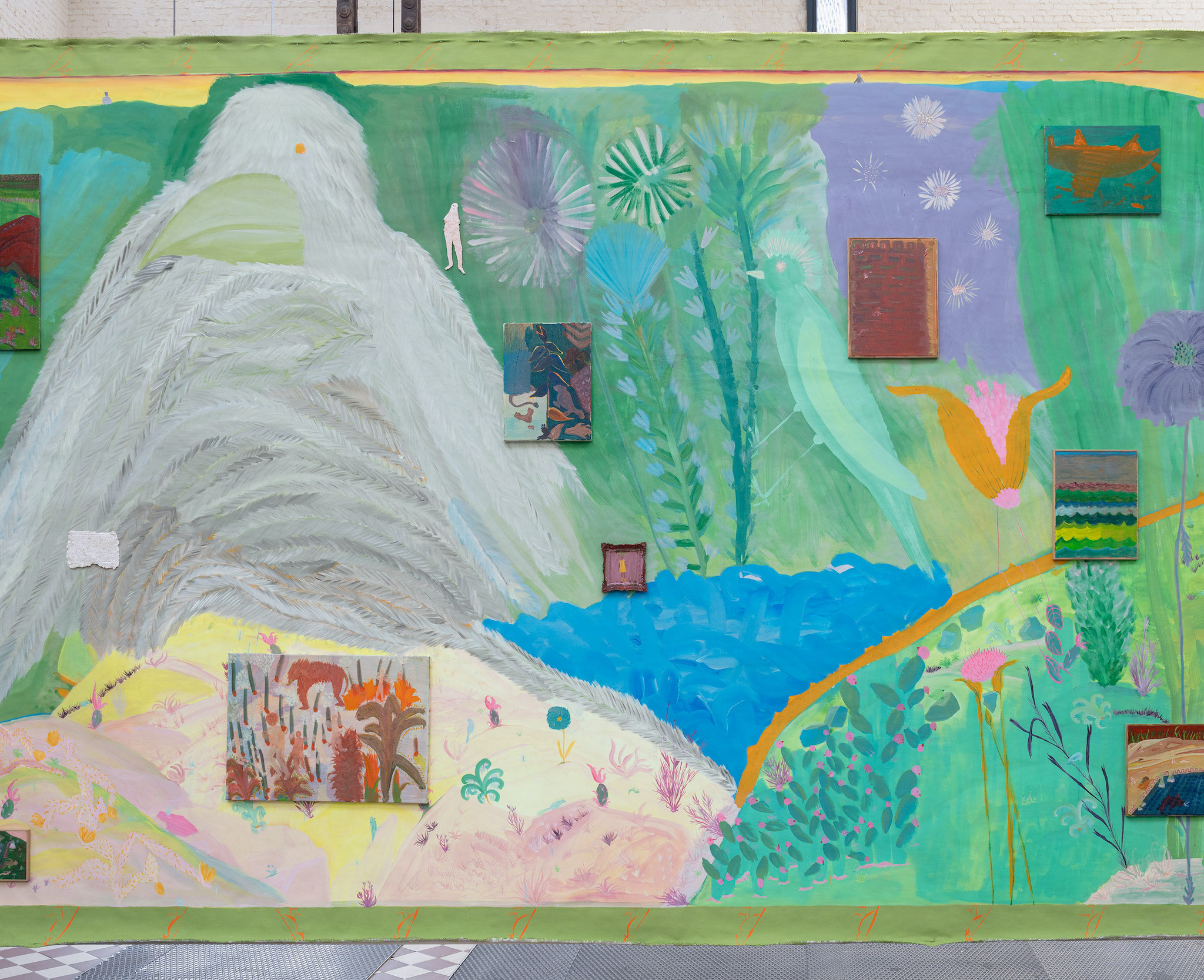
Symbiocene, 2022, close-up
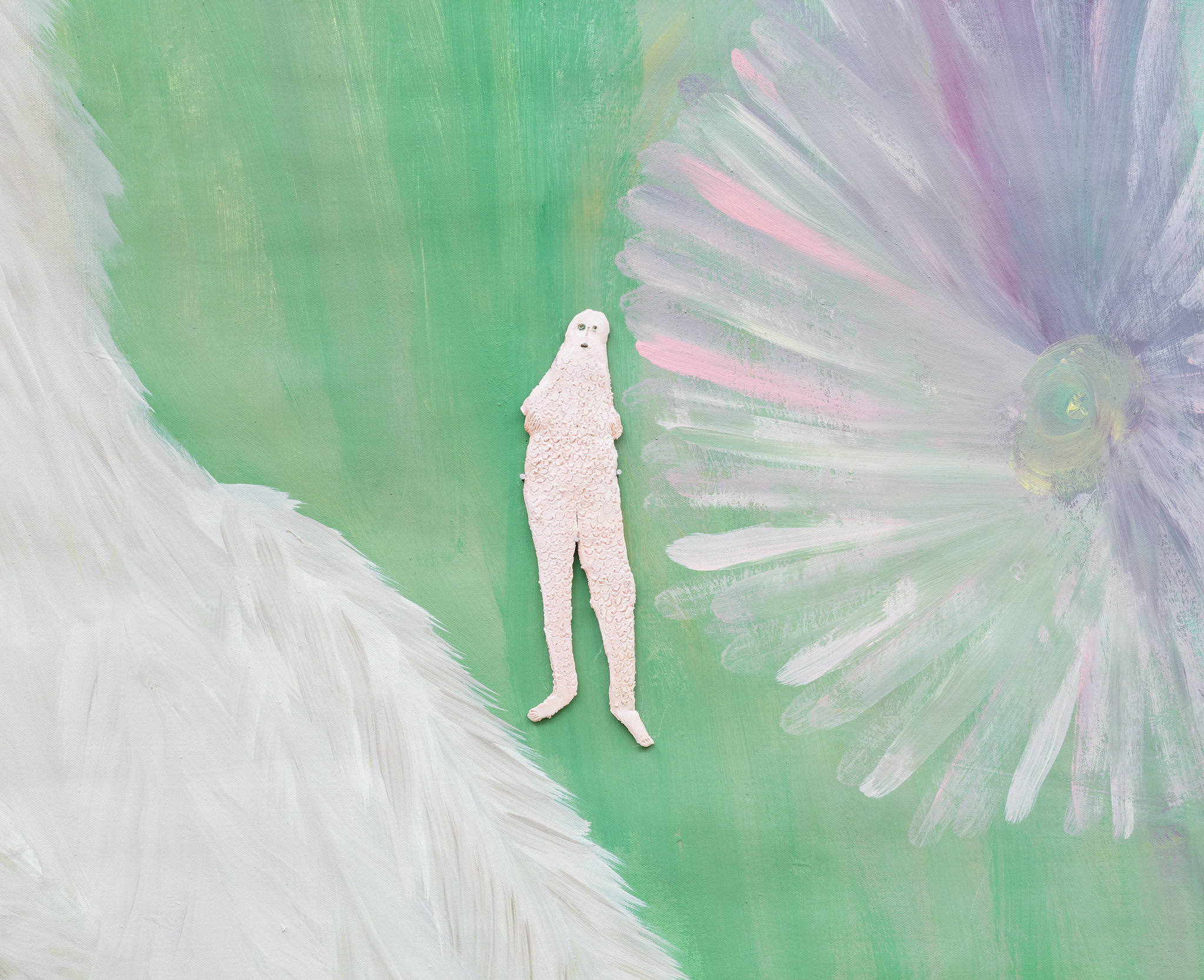
Herma, 2022
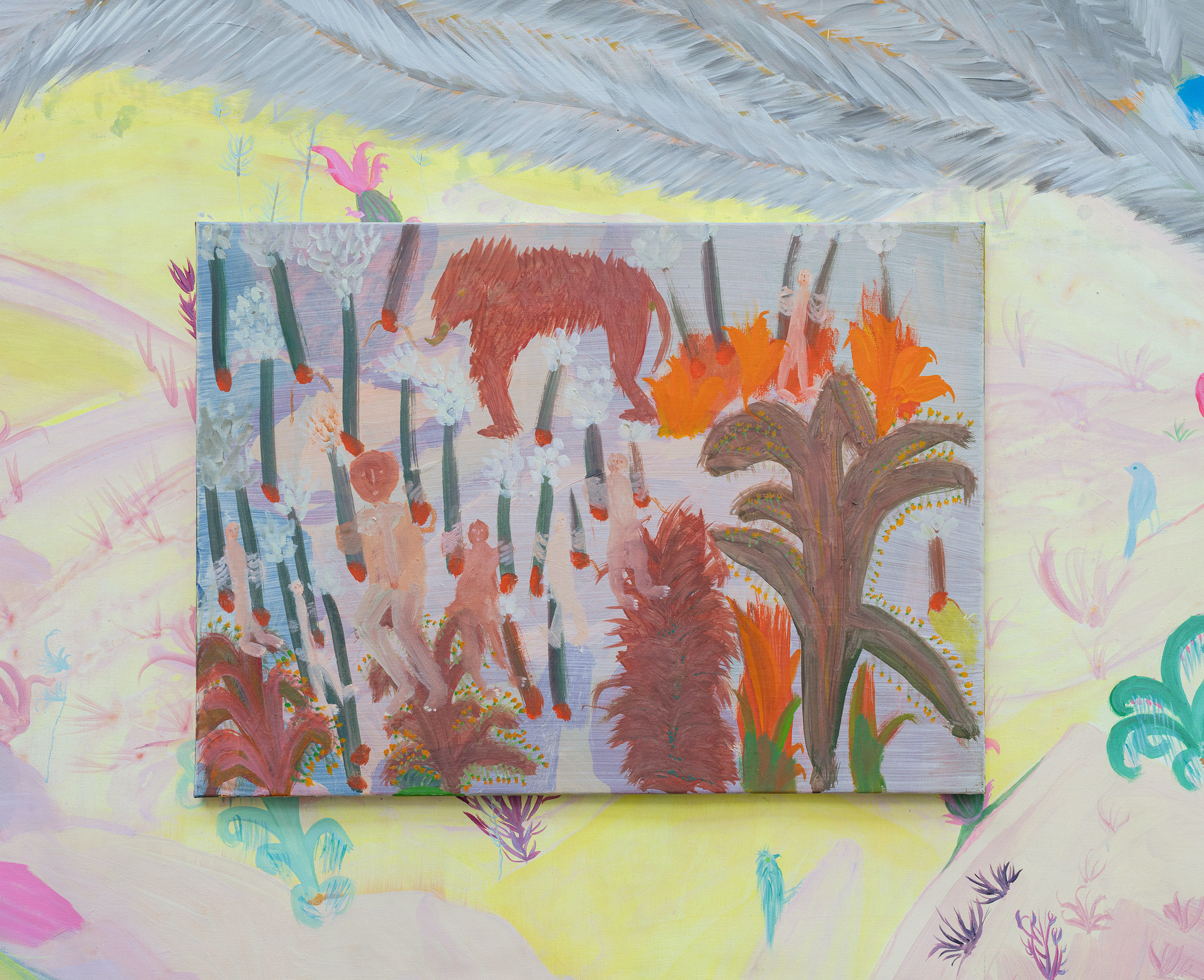
De Pret, 2022
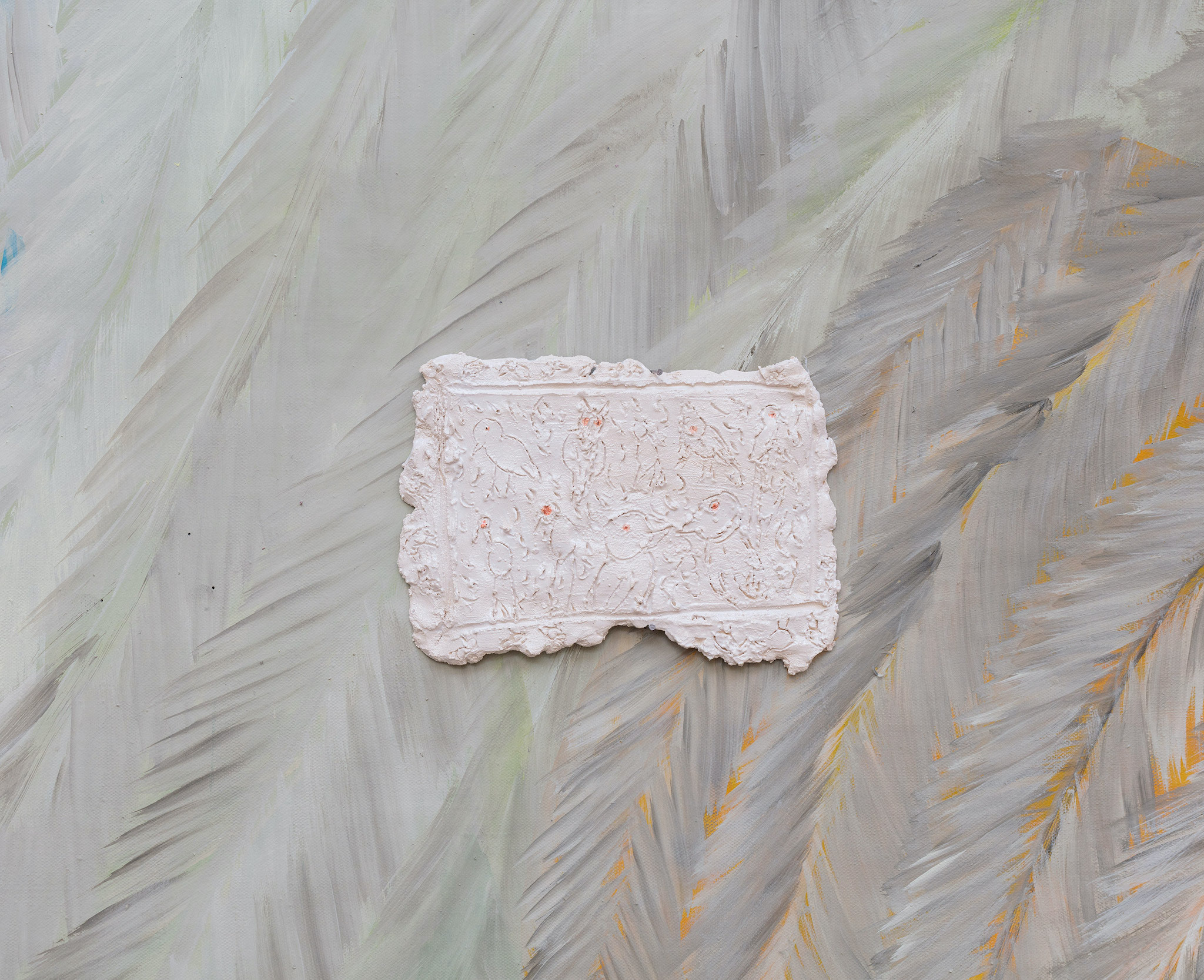
Collapse, 2022

Le Grand Camouflage, 2022
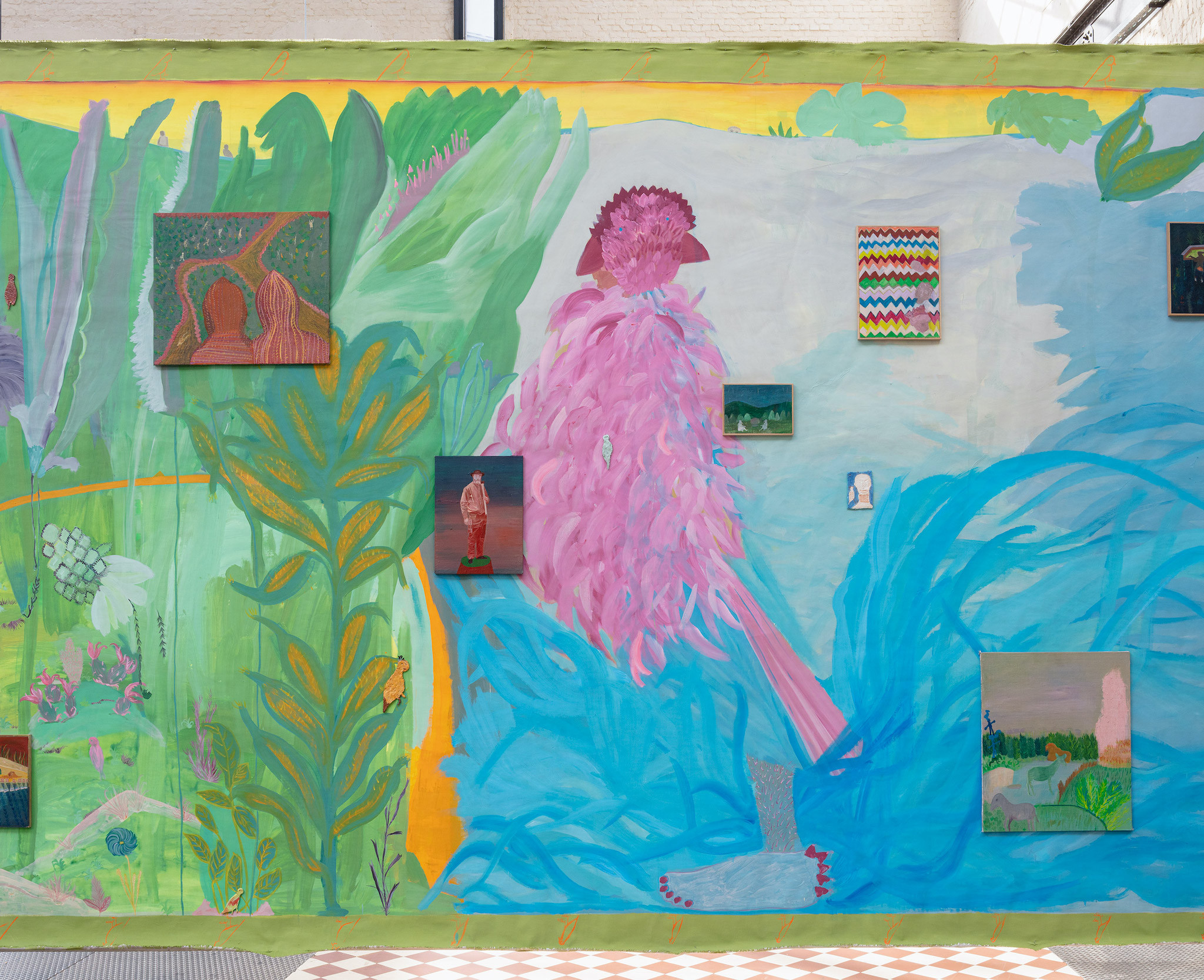
Symbiocene, 2022, close-up

Handig, 2022
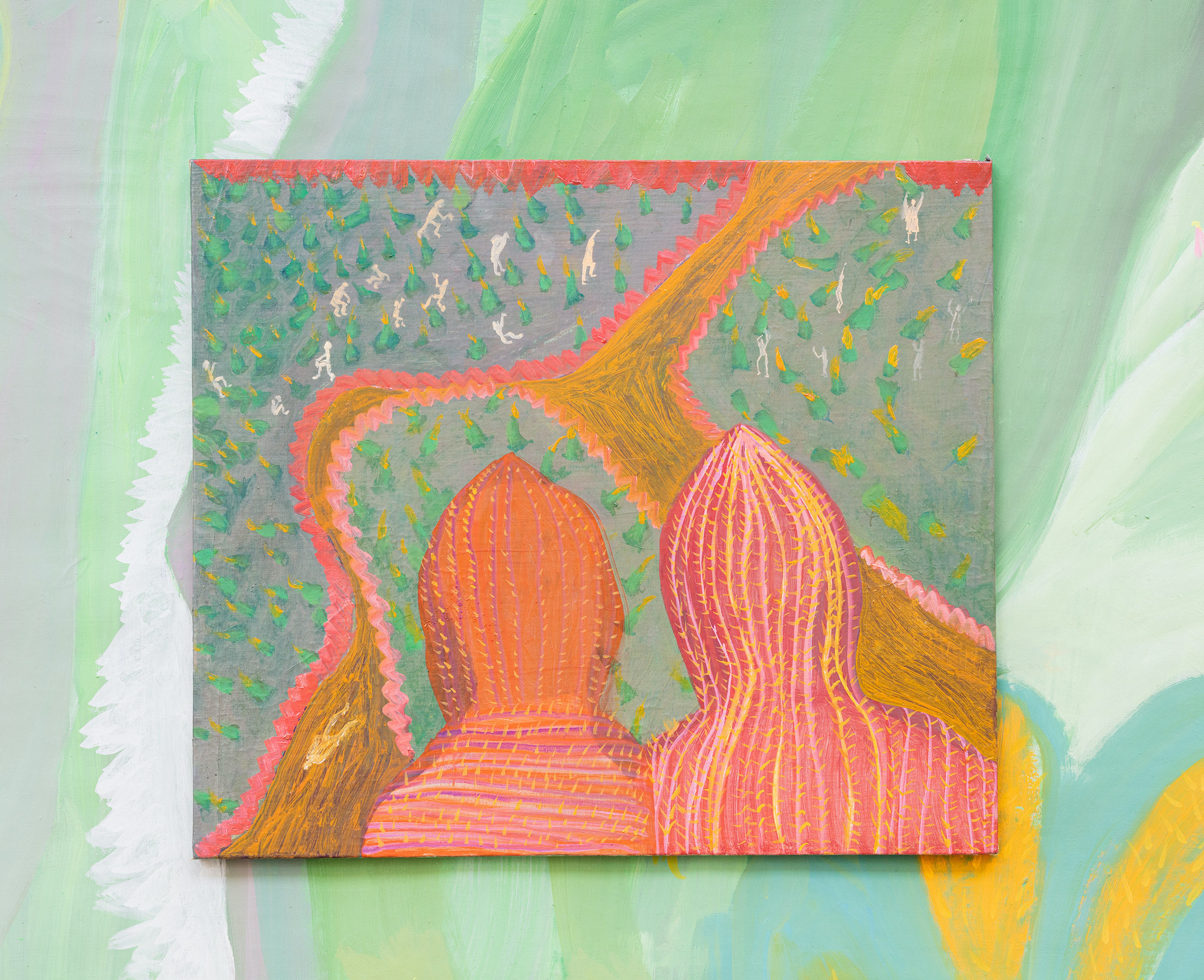
Potron-minet, 2022
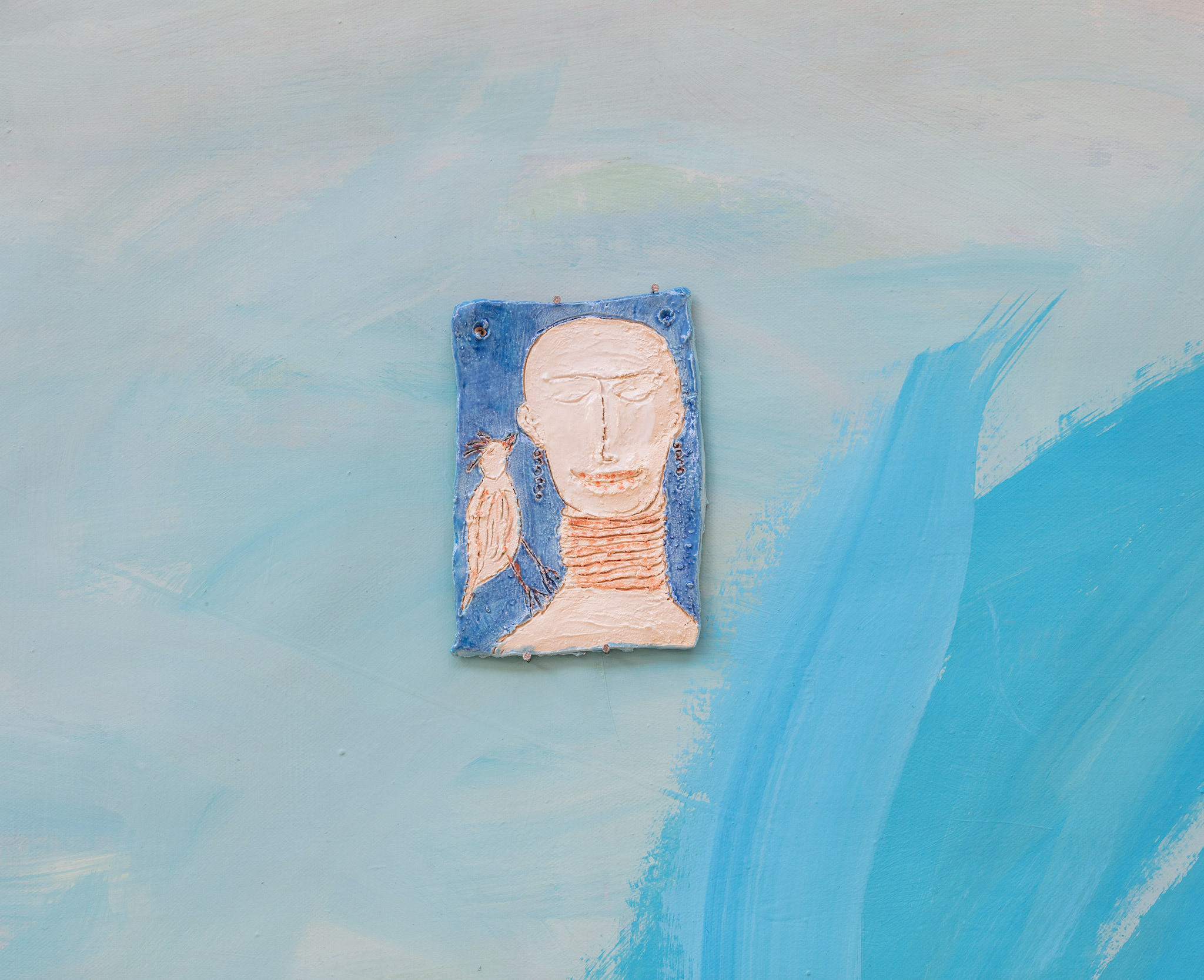
Fluistering, 2022

Sédition, 2016
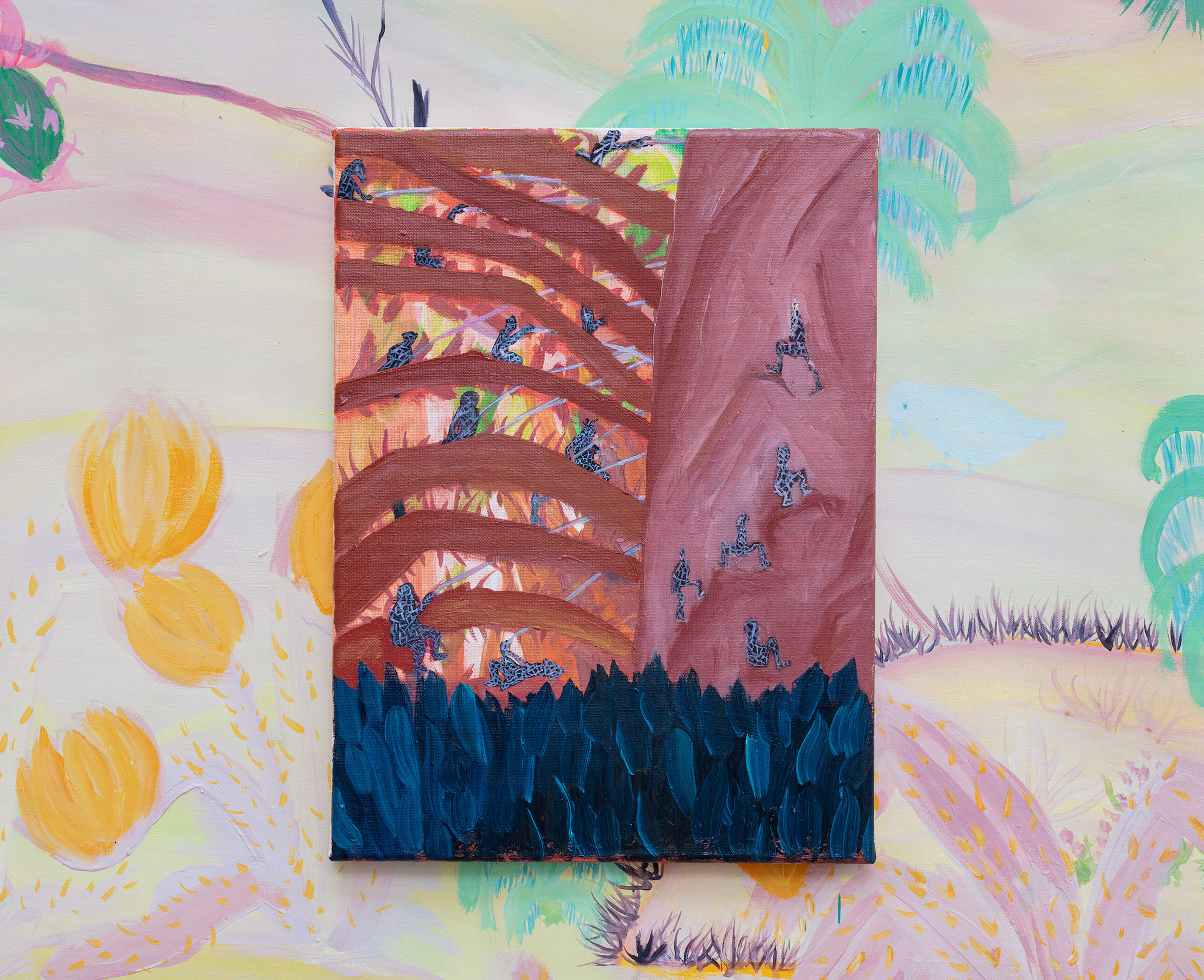
Uitbrander, 2022
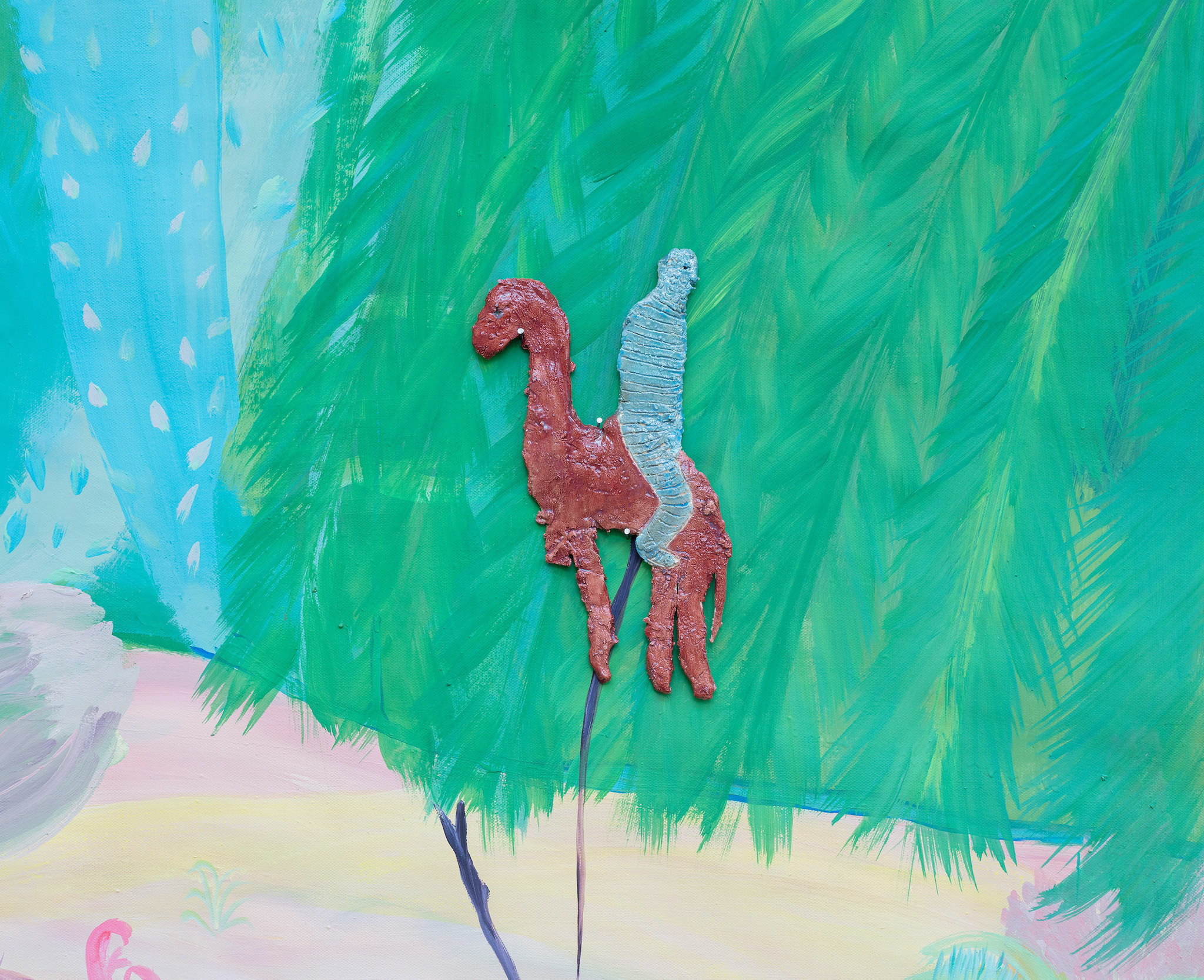
Stelpem, 2022
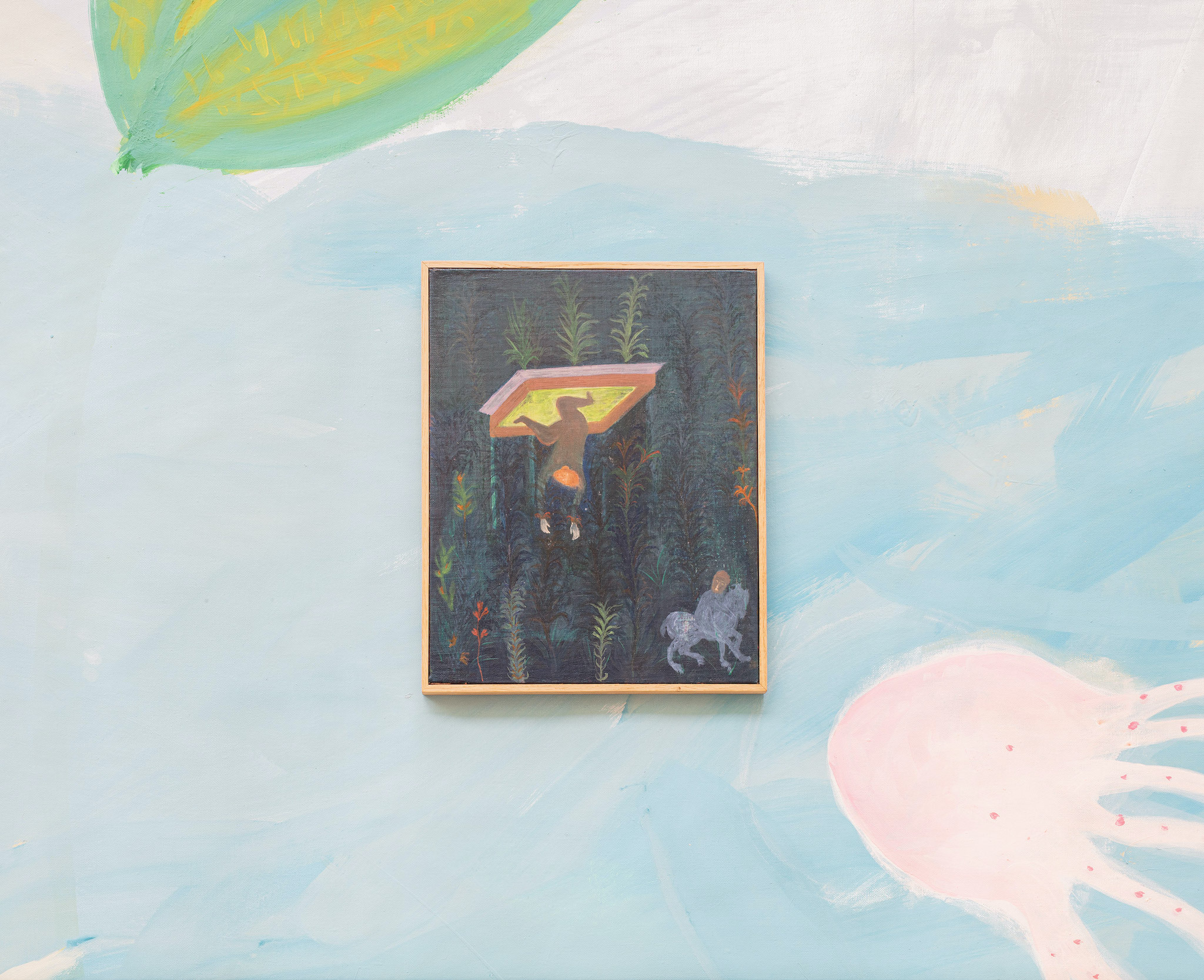
Falot, 2019
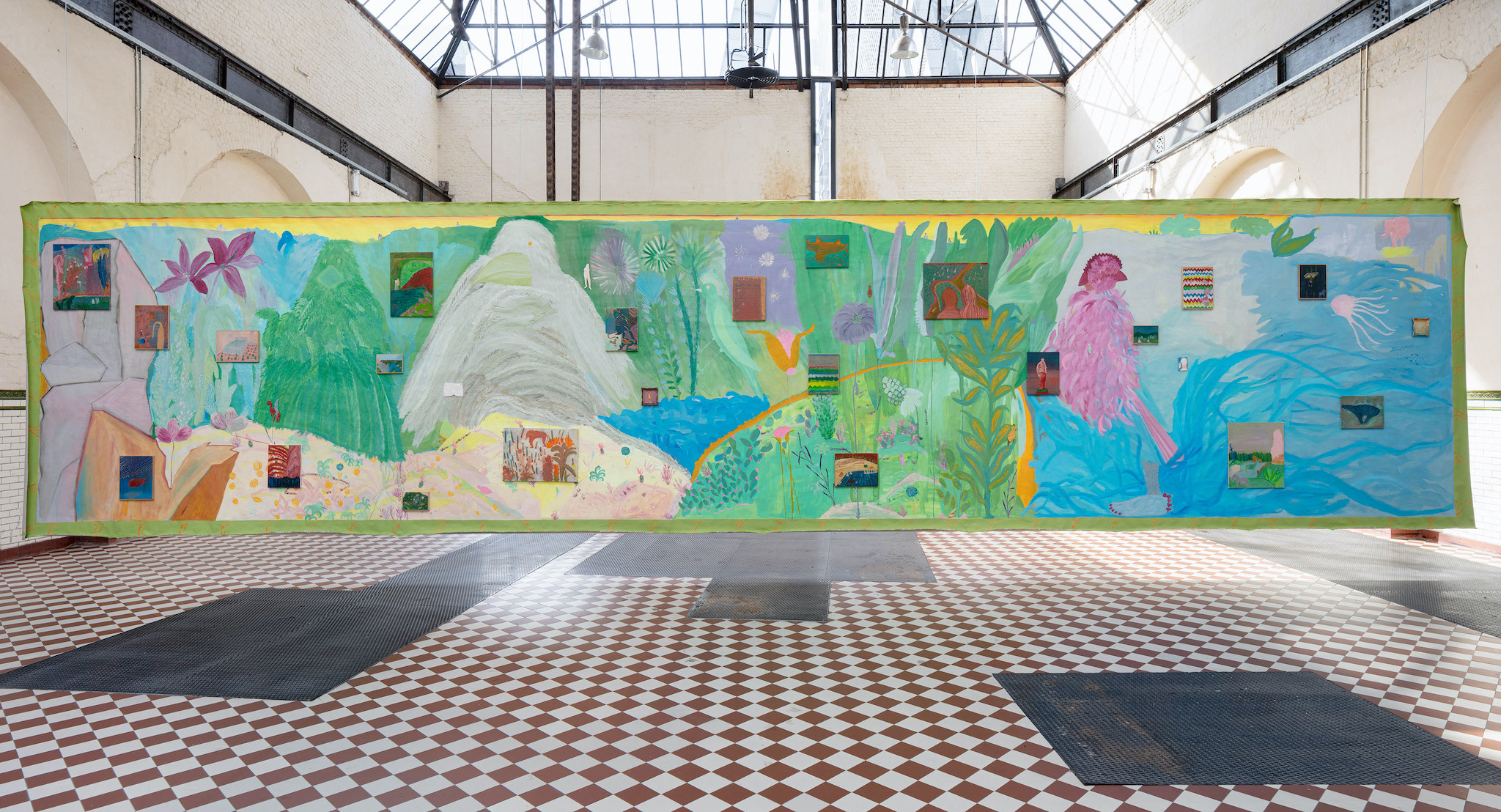
Symbiocene, 2022
Suddenly, you are standing there, in front of the sloping landscape, stretching effortlessly across the width of the exhibition space. The monumental canvas partly blocks the passage to the other side of the room. Despite being alone, accompanied only by a few surprised glances of the visitors, the work feels comfortable here. You, on the contrary, perhaps a little less? Shuffling backwards to find the right place from which to perceive the whole, while trying to shake off the awkwardness of the collision with your fellow visitor from just a second ago. Or bending your back into an impossible parabola, inwardly cursing because this enormous painting, titled ‘Symbiocene’, cannot be contained in the vertical frame of your Instagram stories. The soaring horizon of the colourful landscape seems to be pushing against the borders of the canvas, as if trying to take up even more space before being able to eventually rest. And so, the vegetation continues its proliferation project.
Over the years, Marie Zolamian (°Beirut 1975) has developed a versatile artistic practice. Not only does she continue to extend the boundaries of painting onto other media, such as sound art, participatory trajectories or ceramics, she also challenges her painterly practice by embarking on large-scale projects – the most recent example being her mosaic in the peristilium of the KMSKA and her work ‘Symbiocene’ at Jester.
In preparation for her exhibition ‘Droomland’, Marie Zolamian lodged at the Emile Van Dorenmuseum in Genk, where curator Kristof Reulens guided her to immerse herself in the local tradition of landscape painting. It was here that an old promotional slogan for tourism drew her attention: ‘Visit dreamland Genk’. One can almost forget that, buried under the city’s recent industrial past, there is another heritage, that of the 19th-century Genk which attracted guests from far beyond Limburg because of its exceptional nature. The city turned into a true artist colony (‘station d’ar- tistes’). This local history ignited Zolamian’s drive to work on site in the weeks leading to the opening. It was there that this monumental creation, a landscape where exciting works found their way in, came to fruition.
“I have seen your landscape change enormously day to day over the past few weeks and observed with curiosity how the latest details allowed different contrasting areas of color to fuse. This reminds me of Werner Herzog’s skill of portraying nature, on the edge of fiction and reality.” (T. Deboelpaep, email, September 4, 2022)
For Zolamian, nature is imaginary, and she aims at neither authentic nor an ideal representation of it. You can allow yourself to be overwhelmed by the painted scenery, imposing, aesthetic appearance – an effect certainly enhanced by its scale. Besides aesthetic motivations, Zolamian is also interested in the political meanings of the landscape in contemporary context. It is not the only bearer of meaning in the work, the smaller paintings that are attached to the large canvas, each tell their own story. In the work ‘Solastalgia’, for example, we see a red carpet whirl down the insignificant universe. The title borrows from a term coined by philosopher Glenn Albrecht to describe the climate changes we face today, whose unprecedented scale and pace trigger emotional responses and uncontrollable, latent stress in humans. There is a need for new words that would help us understand these phenomena, claims Albrecht. ‘Solastalgia’ is one of such neologisms, mixing ‘solace’ and ‘nostalgia’. It describes an emotion which entails melancholy and detachment, induced by persistent lack of comfort and the sense of abandonment associated with the loss of the physical environment once described as home. (1) The distressed climate does not directly manifest itself in the iconography of Zolamian’s work. Rather, the work points to Zolamian’s fascination with what can arise when different phenomena crossbreed, what kind of frictions, and what kinds of hybrids can emerge. Not only in terms of living organisms, but also, for instance, when different cultural expressions come into contact and inspire each other.
When you try to grasp the universe of Marie Zolamian’s works, you can feel overcome by a peculiar kind of ‘fomo’ (the fear of missing out) because you know that the meaning of that universe eludes the vision; it cannot ever be fully grasped through the fine layers or deciphered from the fine details.
“I enjoy the challenge that uncertainty poses, that’s where the joy of painting lies for me. It is a game of intuitive juxtaposition of colours, informal forms, and ‘repentir’, in which the already existing elements, some of which arose accidentally, are consciously reworked and reinforced. The more the painting becomes saturated with colours and shapes, the more traces of possibility it begins to reveal. After some time, a shape or a figure appears, with which I can then continue to work.” (M. Zolamian, email, September 4, 2022).
With the same dedication with which Marie Zolamian throws herself into painting work, she delves into research of various phenomena that trigger her at a given moment.
“It is a journal of life, chapters opening and closing with time, according to what is happening in the world, around me and within me. This is what I mean when I say that totality is ultimately a life journey of an individual, someone who has inhabited this world for a period and witnessed certain episodes.” (M. Zolamian, email, September 4, 2022)
Like a fictitious ethnologist, the artist keeps visual journals that illustrate the clusters in her works, the ways in which various themes touch each other, intertwine, to then be let loose again. While Marie Zolamian’s oeuvre can be considered strongly eclectic, her unique stylistic identity introduces a sense of continuity. It straddles the line between contempo- rary urgencies, relatable colourful scenes, and a déjà-vu-inducing, dreamy world, brimming with art-historical references.
“Your paintings integrated into the monumental work bring to mind a cabinet of curiosities, displayed in the open air.” (T.Deboelpaep, e-mail, September 2, 2022)
The green outline of the painted landscape alludes to the tradition of tapestry art, while the refined, lively areas of color resemble the powerful geometric compositions of the Eastern tradition, where nature is repre- sented through a rich vocabulary of forms. Furthermore, Zolamian’s painting shares illustrative qualities with the Flemish tapestries from the late Middle Ages, in which various narratives intertwine. Also in ‘Symbiocene’, the small, intimate paintings enter into a dialogue with each other and with the landscape stretching in the background. Stylistically, you can recognise similarities with the ‘verdure’ (foliage) tapestry tradition, which in place of human figures features heraldic symbols and royal emblems. The composition is often dominated by beautiful greenery in the background, filled with intricate plants and flowers. This specific variant of tapestries is called millefleurs. (2)
“You know, recently I had to think about the carpet series ‘The Unicorn Hunt’. You may know it? Between the hybrid floral details in your works, you can spot mythological-looking creatures, just before they vanish into their green surroundings. Others appear less shy, for instance the giant birds that watch contentedly over their empire.” (T. Deboelpaep, email, August 25, 2022)
In ‘What is nature?: Cultural politics and the non-human’ Kate Soper analyses how our understanding of the notion of ‘nature’ influences our relationship with it. This all-embracing term is built on the inherent contra- diction: while ‘nature’ is considered to be the opposite of ‘culture’ and the human, the term is a cultural construct in itself. Still, this perceived discrepancy between culture, people, and their natural environment dictates how we act towards our environment. Whether striving to represent it, idyllically or not, to preserve it, or to dominate it, there exists a hierarchical order in which either human or nature has the upper hand.3
In ‘Symbiocene’, small and giant creatures coexist peacefully in their vast habitat, while human figures remain distant, curiously peering over the edge. The individual works present all different shades of the relationship between people and their environment. Some are funny and very peculiar. Others are more antagonistic and ominous, one more explicitly than the other. Some legs are being swallowed by a fish, a figure is falling down an endless void. Attuning to the surrounding chaos seems to be the ideal survival strategy for some characters, who dissolve into their surroundings thanks to their camouflage colours and fading contours. On the other hand, in various works you can notice examples of anthropomorphism, of mythological beings balancing between the shape of a human being, an animal, or a plant. In the Middle Ages, such creatures were considered to be magical, even divine. Zolamian knows how to create such hybrid life forms with her brushstrokes. Her pictorial musings celebrate diversity and intersection, and provide her with an excuse to paint.
Soper claims that in the modern world our conceptualisation of the ‘natural’, underpinned by anthropocentrism, has led to an unjustifiable excuse for oppression within our own species, towards animals and our environ- ment. In short, what we culturally perceive as “the other” is often seen as inferior. (4) In the Anthropocene, we arrived at the point where our impact on the planet has become a threat to humans. Even though our fate seems to have already been sealed, in ‘Earth Emotions: new words for a new world’ Glenn Albrecht tries to offer an alternative, where there is no hierarchical distinction between humans and the ecosystems in which they live. He puts forward an idea of ‘symbiocene’, a new era called, wherein mutual relationships are based not on negative but ‘terranascient’ emotions. These are the emotions affiliated with the human’s role as caretaker for the planet. The notion of ‘symbiocene’ is based on some of the core scientific principles of symbiosis, such as a balanced coexistence of organisms, which benefits both sides. (5) A vision of the future based on cooperation instead of destruction – it sounds utopian. Yet Albrecht’s thinking is imbued with grounded realism and the realisation that current mental frameworks must be changed in order to open up new avenues. In the work ‘Symbiocene’, Zolamian does not show a suffe- ring landscape; negative emotions are replaced by thrilling optimism, without falling into an everything-will-be-alright story. The artist offers nature a well-deserved break from human intervention, so that it can recover in peace. Sprawling plants multiply in the landscape as her spontaneous brushstrokes give nature free rein. Just as the human characters from afar let their curious gaze loose itself in the many details, your gaze keeps picking up on new elements while others seem to be fading away. One thing is certain, Marie Zolamian’s painting allows itself to be wandered through endlessly.
FOOTNOTES
1. G. Albrecht, Earth E motions: new words for a new world. Cornell University Press, London, 2019, p. 30
2. F. Cremades, Vlaamse wandtapijten voor de Bourgondische hertogen, keizer Karel V en koning Filips II. Kunsthal Sint-Pietersabdij, Ghent,2009, p. 149
3. K. Soper, What is nature?: Cultural politics and the non-human.Wiley-Blackwell, 1995, p. 73
4. K. Soper, What is nature?: Cultural politics and the non-human.Wiley-Blackwell, 1995, p. 50-55
5. G. Albrecht, Earth E motions: new words for a new world. CornellUniversity Press, London, 2019, p. 30
Tine Deboelpaep

